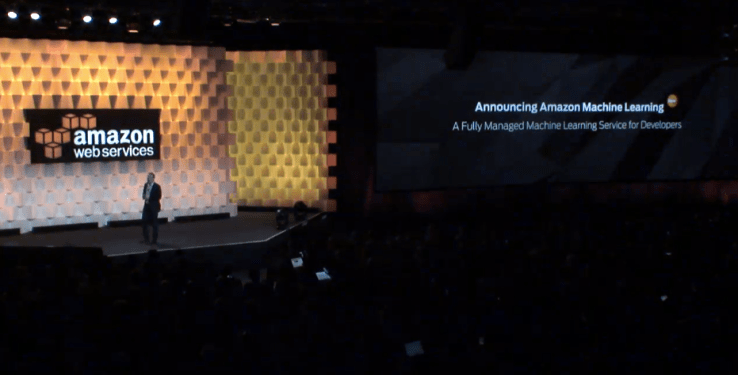 Andy Jassy, senior vice president at Amazon Web Services, announced a new machine learning platform today at the AWS Summit in San Francisco.
Andy Jassy, senior vice president at Amazon Web Services, announced a new machine learning platform today at the AWS Summit in San Francisco.The Amazon Machine Learning service is designed to give developers without machine learning background the tools to build smart, data-driven applications that can not only analyze what’s happening in real time or what happened in the past, but also predict what’s going to happen in the future (and that’s what’s most interesting here).
Companies like Netflix have been using AWS tools to undertake machine learning tasks for some time, but as Jassy said, “it’s hard work”, and AWS wanted to create a service specifically suited to machine learning without requiring specific expertise.
As with so many tools we see on AWS, the roots of the new tool began on Amazon.com where the company has been experimenting with various forms of machine learning for years. When you look at the recommendation engine — if you bought this, you might also like that — it was an early form of it.
Data Makes The World Go ‘Round

Developers, regardless of their role, are increasingly interacting with data on a more regular basis, Dr. Matt Wood from AWS pointed out. They typically look back at what happened or maybe they can see what’s happening in real time, but the real value comes when you can ask questions about the data you’re seeing.
For example, you could ask about fraudulent activities on an eCommerce site or which content a person might like to see next based on what he or she is looking at now.
AWS recognized that these types of predictions required lots of different expertise around statistical analysis, model building, data cleansing and so forth, then there was the whole idea of ingesting and scaling to deal with varying amounts of data and figuring out how to make predictions.
The new tool requires three basic steps:
- Build your model in Amazon S3 or Redshift.
- Validate and optimize your model.
- Make batch predictions with trained models.
Putting It Through Its Paces
To test the new platform, Amazon developed a couple of experiments. In the first it let two developers try and predict customer gender more accurately. Armed with this information, Amazon.com can make better recommendations, but using the system it had in place only provided 65 percent gender prediction accuracy. Two developers without any expertise attacked this problem and in 45 days, they had improved the accuracy from 65 to 92 percent.Then they gave another developer the same task, except this person was using Amazon Machine Learning. Jassy claimed he was able to achieve the same 92 percent accuracy in just 20 minutes.
It’s worth keeping in mind that the model might have been built and validated already, but the point is that you can drastically reduce the amount of time it takes to get these kind of answers with these tools.
AWS will have some competition in this space. Azure launched its own machine learning tool in February. IBM also has a machine learning capabilities built into Watson, which it enhanced with the purchase of AlchemyAPI last month.